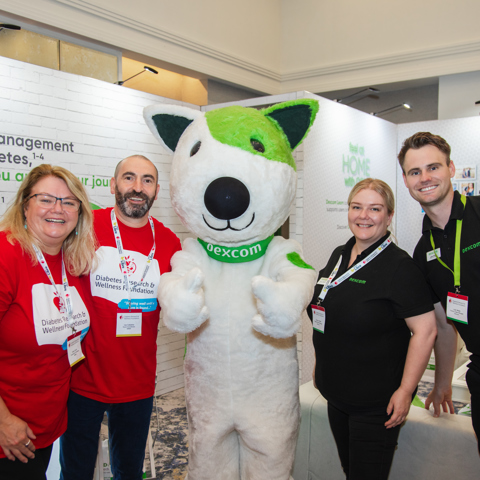
DRWF Podcast: Discussing the latest developments in continuous glucose monitoring
We talk to Shay Speakman-Brown, Market Access Director for Dexcom in the UK and Ireland following their participation at the recent conference of the European Association for the Study of Diabetes.
For the latest DRWF podcast we discuss the latest developments in continuous glucose monitors (CGM), hybrid and closed loop systems, and the growing compatibility with other personal digital devices.
The European Association for the Study of Diabetes (EASD) annual conference was held in Madrid in September.
Shay Speakman-Brown, Market Access Director for Dexcom in the UK and Ireland discussed the company’s involvement at the conference: “EASD specialises in research progression technology and gives everyone a chance to come together and look at the range of technology and advancements that are made in diabetes.
“It was a particularly interesting time for us. One of the areas we are really focusing on is type 2 diabetes.
“During EASD, we had a very strong presence and a lot of discussion at our symposium around how do we optimise diabetes treatment as a supporting therapy, and how do we improve access so that with our technology and Dexcom technology specifically, we can improve reach and also user experience.
“Some of the discussions that we had during EASD were really around looking at how we can expand the network of devices we recently launched. The Dexcom One+ in the UK, Sweden and Ireland. Our newest sensor device has been built with people living with type 2 diabetes in mind, in addition to making it available for those living with type 2 diabetes who do not need some of the advanced features that our other sensors have.”
“What was really important to us during this symposium was that 91% of those that used our sensor felt empowered to manage their diabetes. I think that's a really powerful message that it is not just about having access to technology, but the impact that it has whilst you are using it that can really make you feel empowered. Within that as well, 27% reported improved adherence to medication after six months. I think these are really compelling results.”

Shay highlighted the importance for diabetes technology to be available in different countries: “It is really important that in each country where Dexcom is present that we continue to drive access.
“We are continuing with people living with type 1 diabetes to ensure that access is expanded, and that people have access to advanced therapies and technology. But also with type 2 diabetes, there is quite a difference in access level.
“Sometimes that could be perceived as an inequality, across different countries. I think that is driven by the fact that there is a little less evidence at the moment in terms of supporting diabetes technology in type 2 diabetes.
“We are really pleased that studies like Steno2tech showed specific evidence that sensor technology, and particularly focused in the type 2 diabetes area. Having these types of discussions really starts to bring it to the forefront to ensure that anyone living with type 2 diabetes, particularly those on insulin, have immediate access to it, and also with the launch of other products that can be used for those not on insulin, but give them the opportunity to monitor glucose. It just adds to the story that there is a need for this technology.”
On additional diabetes technology, Shay added: “One of the key things that we said we were focusing on is type 2 diabetes. The question always is does that mean that Dexcom's focus has moved away from type 1 diabetes? The simple answer is no. Dexcom is still powering many hybrid closed loops, as they are called in the UK, or AID systems elsewhere. And we have still got the most clinical data and evidence than any other CGM connecting to pumps with algorithms to make those hybrid closed loop systems. We still have a focus on all aspects of people living with diabetes.”
Shay highlighted that the access to technology in self-management of diabetes can provide “control and empowerment for people living with the condition.
Shay added: “For the hybrid closed loop system, there is a choice and a range that is specific for people living with type 2 diabetes. You can also choose how your data arrives. You can choose whether you send your data to an electronic patient record, for example. And it gives that more holistic view of your diabetes journey in other parts of your healthcare roadmap as well.
“I think it is really important that we try to minimise any stigma that might be considered.”
Our thanks to Shay Speakman-Brown from Dexcom for providing such a comprehensive roundup of the latest developments in technology and their engagement with people living with diabetes.
Listen to the full interview on the DRWF podcast
I would like to make a regular donation of
I would like to make a single donation of
There are lots of ways to raise money to support
people living with all forms of diabetes.
Bake, Swim, Cycle, Fly ... Do It For DRWF!
Fundraise with us
Recent News


